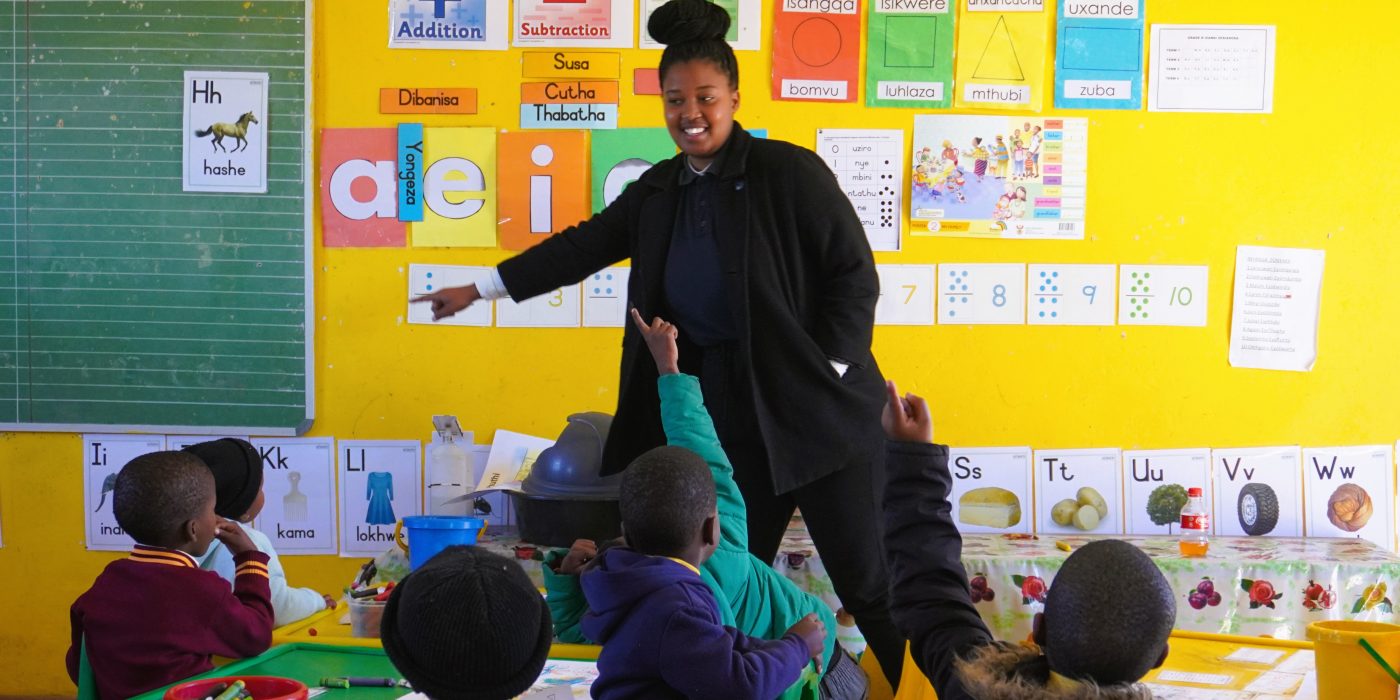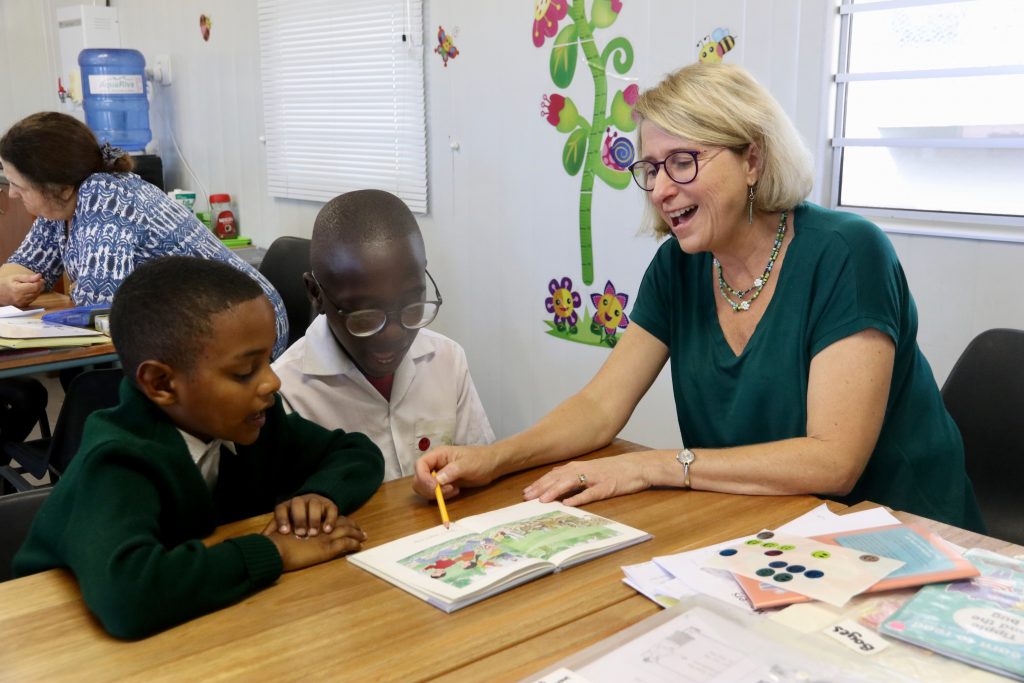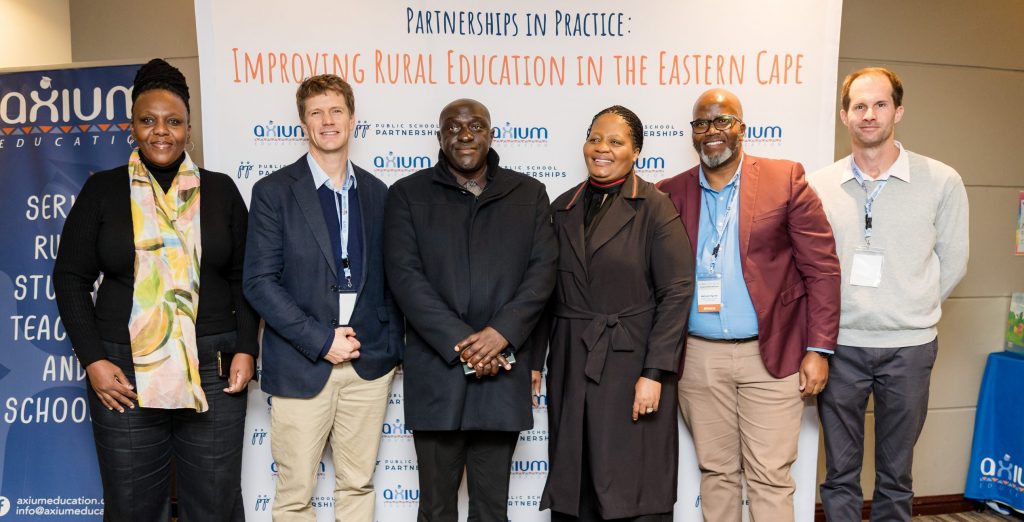As the weather begins to warm up around the country, the topic of many braai-side conversations will inevitably turn from Banyana Banyana or the Springboks to whether the answer to South Africa’s well-catalogued woes is employment or education, Eskom or the economy. Our answer has always unequivocally been education – we’re an education non-profit after all – but our experiences with the Social Employment Fund, a relatively new government employment initiative, over the last year have started to shift our thinking.
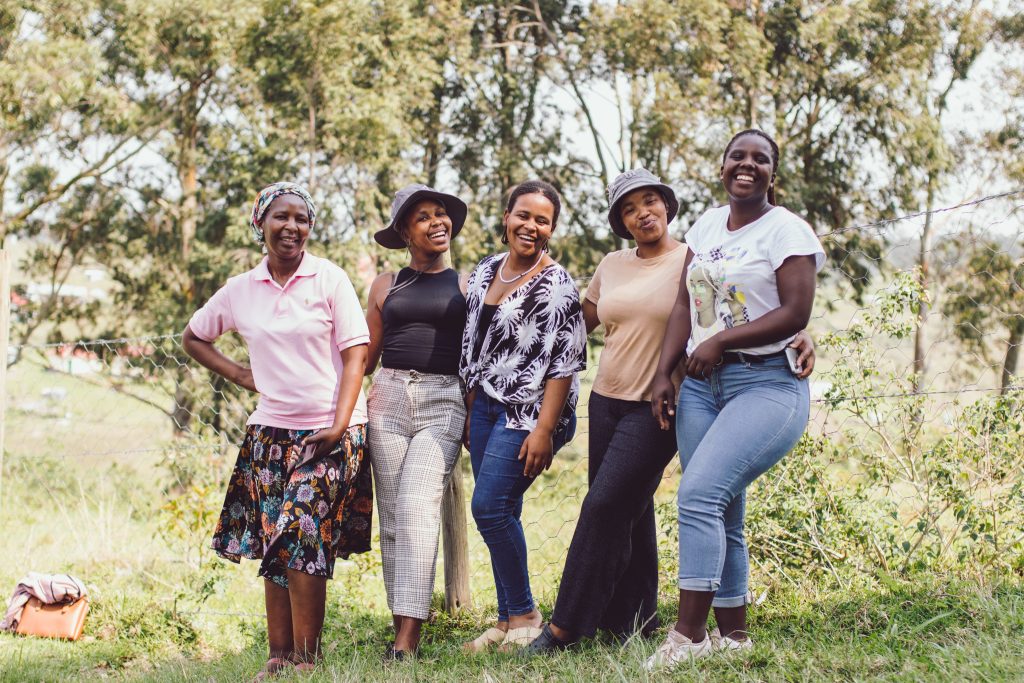
First, a little context. Axium Education is based in two rural villages on the Wild Coast of the Eastern Cape, serving around 6000 learners in a variety of in-school and after-school programmes. In the communities we serve, unemployment is as high as 80% and education outcomes are among the lowest in the country. What these statistics don’t convey, however, is the massive potential that lies in the youth of these communities, who are so often seen as a problem to solve rather than an opportunity or resource.
Our early literacy programme deploys these young people as Nobalisa (“Storytellers” in isiXhosa) in schools, where they use the Teaching at the Right Level (TARL) methodology to enable focused small group literacy instruction in Foundation Phase classrooms. Through the Social Employment Fund (SEF) we’ve managed to add 12 new schools to the programme over the past year, employing 100 new staff and reaching an additional 2400 learners – and have plans to double this again next year.
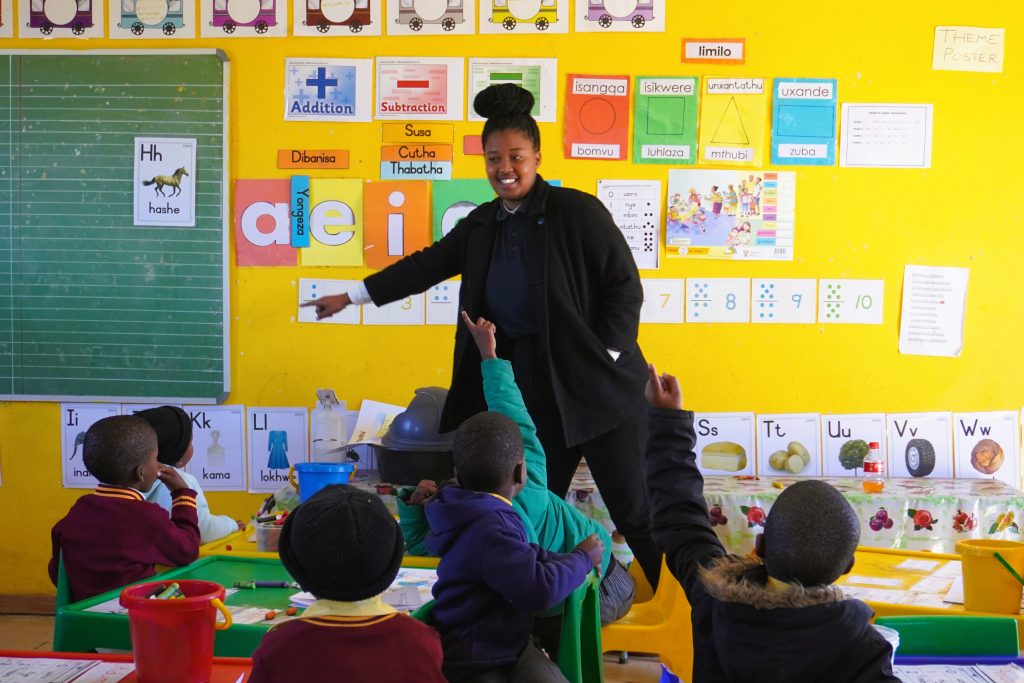
There are several wins here. Communities embrace the prospect of more jobs, more breadwinners – albeit working limited hours at minimum wage. Whether because rural schools tend to be either very small or overcrowded (we work with schools with less than 70 children in the entire school, and some who have more than 70 in a single class), or because teachers are often based in cities one and a half hour’s drive away from their schools, rural schools never seem to have enough human resourcing. The introduction of community-based staff adds an element of reliability and additional capacity to school staffing.
For the young people working as Nobalisa, many find real purpose in working with children from their community, and quickly become gifted instructors. Since they come from the local community and will often have attended the school themselves, Nobalisa are seen as relatable role models. This, together with the individual attention and fun that is packed into every Nobalisa lesson, means children greet them with enthusiasm upon their arrival in schools.
Finally, and perhaps most importantly, literacy levels are improving. South Africa’s literacy “crisis” has received plenty of attention in the media, particularly after the most recent PIRLs report which pronounced 81% of our Grade 4 children unable to read for meaning. While it is hard to untangle post-COVID recovery and our data lacks the rigour of an RCT, early results are encouraging: a year into the programme the percentage of Grade 1-3 children in “Story Level” (the highest of the TARL levels) has almost doubled and the percentage in “Beginner Level” (the lowest) is nearly half.
As Prof Jon Shelton points out in The Education Myth, and as many South Africans’ lived experience underlines, getting an education is not much good if the economy is structured in a way that limits employment and opportunity. What the Nobalisa Programme’s expansion through SEF has taught us is that jobs matter. But workplace support matters too – employment is of limited value if those jobs are unstructured, unsupervised and lacking in opportunities to progress. This has been our main criticism of the Education Assistants, a similar jobs initiative from the DBE. While the intention is excellent, when contracts are short-term, participant turnover is high and the training and work expectations are limited or vague, we’re not doing our young people any favours (we’re aware there are plans afoot to improve all of this).
We’ve found that what’s required is significant investment in training and coaching of staff, as well as a clear, supported pathway into future roles with us, alternative employers or into tertiary study. If the research is to be believed, we are due to lose 50% of our teaching force over the next 10 years, with rural areas likely to be most affected. What better way to develop future generations of high quality teachers than through what is essentially a two-year paid internship, while working towards a qualification?

And by the way our experience is not unique: other partners we work with such as Nal’ibali, the Bulungula Incubator and Community Keepers all make use of the SEF or alternative employment programmes like Expanded Public Works or the Jobs Fund to create large scale social good. There is huge potential in this employment “moment” to spark a 1930s-New-Deal-like movement that creates meaningful short-term employment, enables youth to launch themselves into a career, and at the same time improves education outcomes.
As will have become apparent, our answer to the fireside question is now a resounding education and employment. Funding for the SEF comes to an end at the end of 2024. We hope ours will be one of many voices raised to advocate for its expansion, with sufficient resourcing to ensure the kinds of support that young, first-time workers need in order to flourish.
Axium Education will be sharing more about the Nobalisa Programme at the Litasa Conference this weekend. This article first appeared on Kamvalethu’s Blog and at axiumeducation.org

